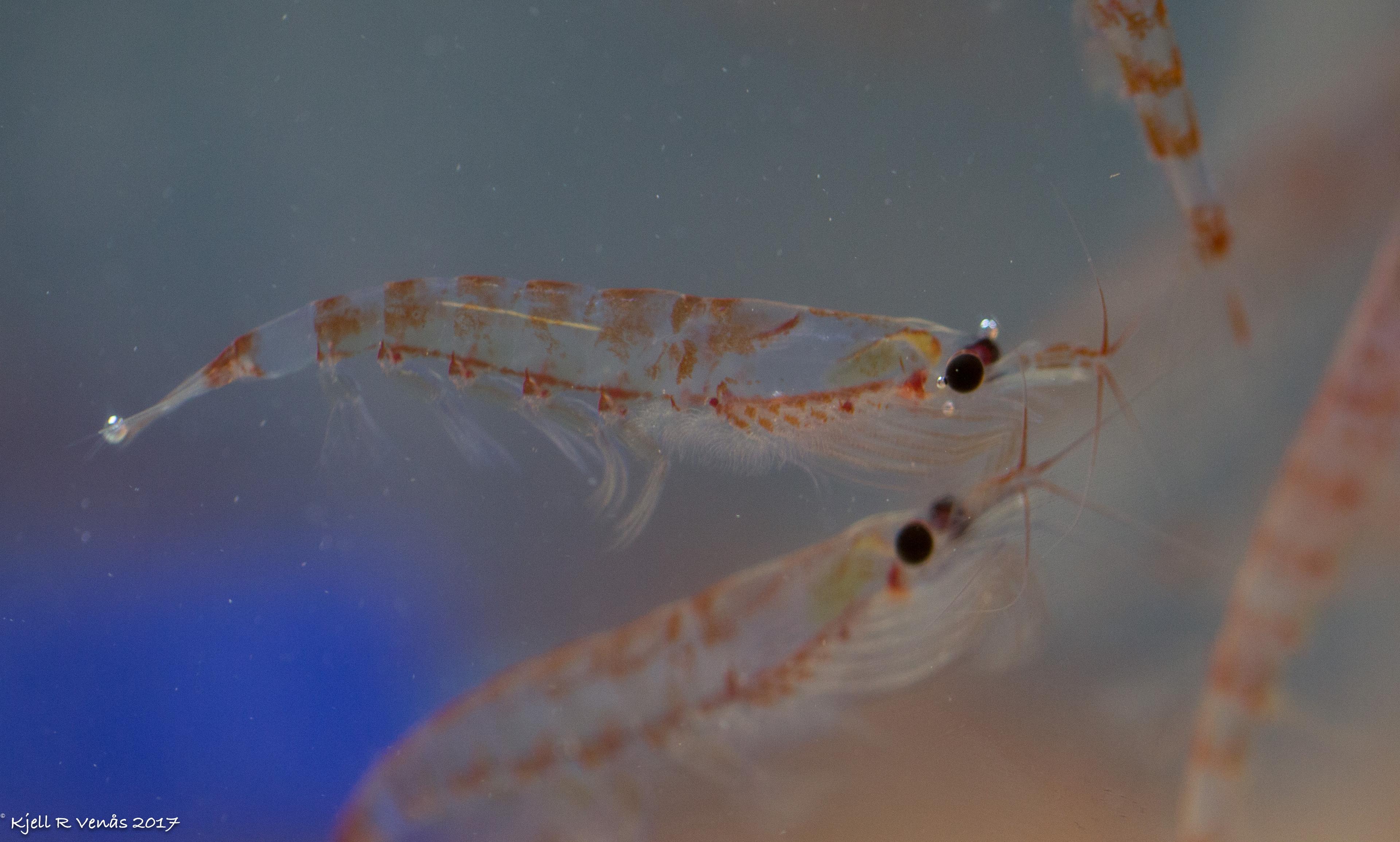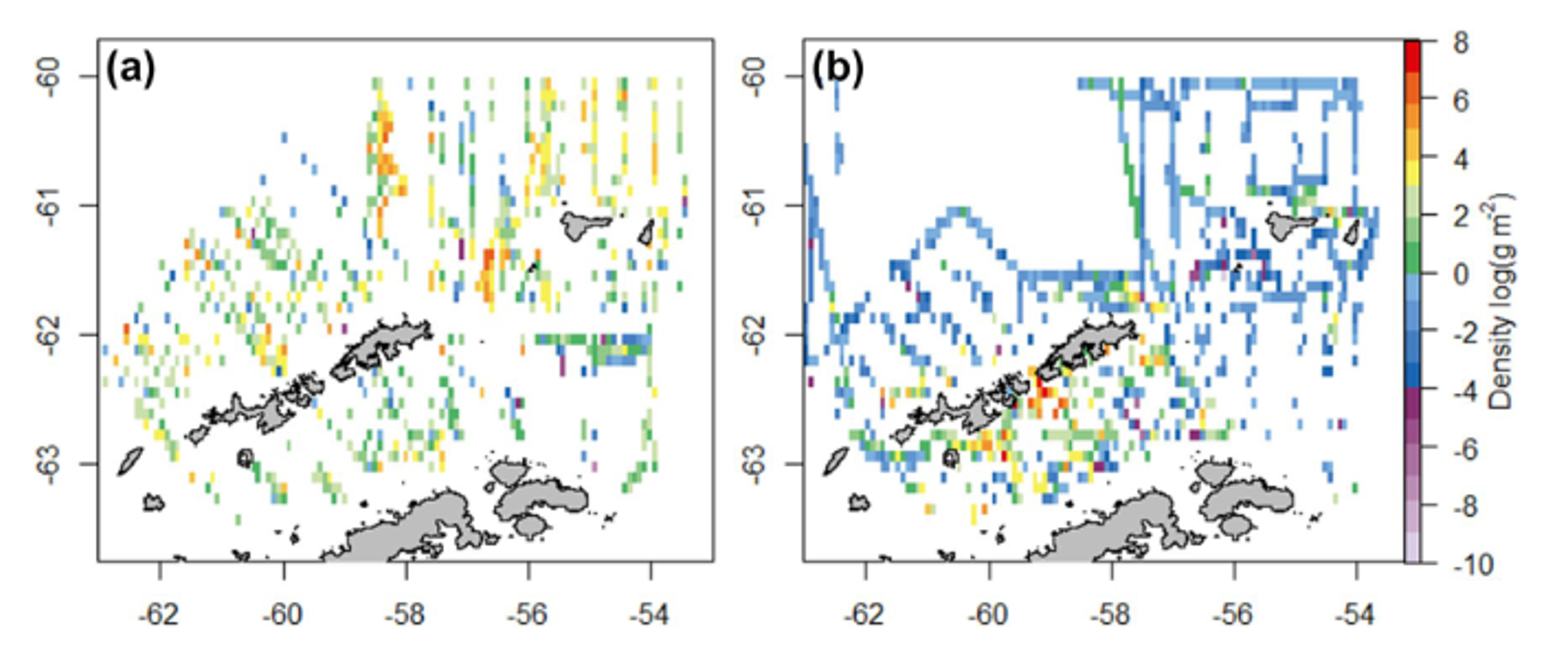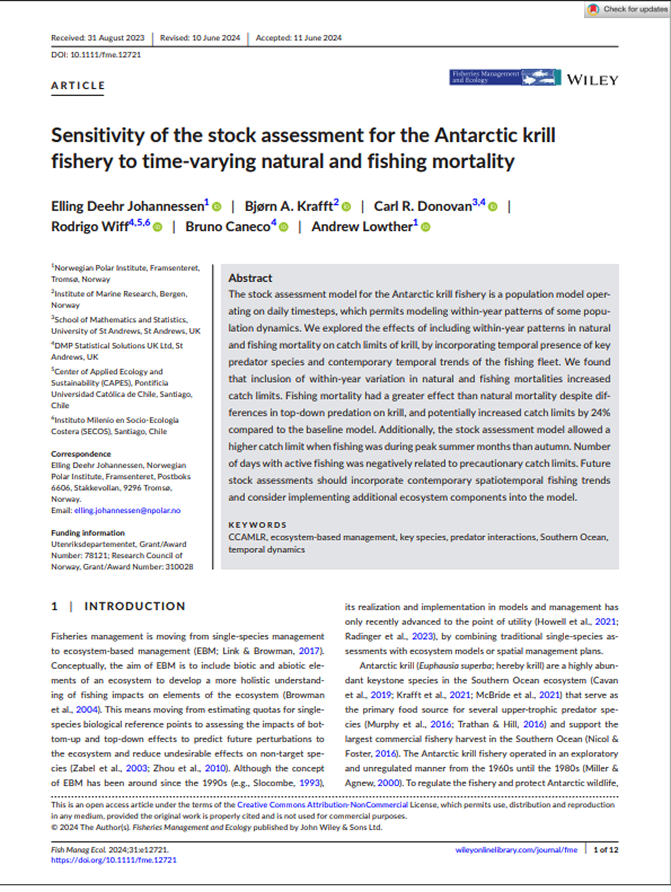
Biomass
Fisheries management
Antarctic ecosystem
Krill (Euphausia superba)
Estimating the average distribution of Antarctic krill Euphausia superba at the northern Antarctic Peninsula during austral summer and winter
Summary
This study developed predictive maps showing where Antarctic krill are most likely to be found in the northern Antarctic Peninsula region during summer and winter, filling an important gap needed for ecosystem-based fisheries management.The researchers used acoustic survey data spanning 11 summers (1999-2011) and 4 winters (2012-2016) to identify which environmental conditions are associated with high krill density. They then created spatial models that predict krill distribution across the region.In summer, krill concentrated near the shelf break in warmer, saltier waters with moderate chlorophyll-a levels. During winter, krill were found in shallow waters with low sea-ice concentration and moderate current speeds.These predictive habitat models provide valuable spatial information to support CCAMLR's management approach by identifying areas where krill consistently aggregate in high densities. This information is critical for both sustainable fishing operations and protecting feeding areas that krill-dependent predators like whales, seals, and penguins rely on.

1
This figure shows the average density of Antarctic krill (Euphausia superba) observed during acoustic surveys. Panel (a) displays mean krill density (shown on a logarithmic scale) averaged across all summer surveys conducted from 1999 to 2011. Panel (b) shows the same data for winter surveys from 2012 to 2016. The maps reveal the spatial distribution patterns of krill concentrations in the northern Antarctic Peninsula region during both seasons.Key Findings
1
Summer krill density is highest at shelf breaks, in areas with higher sea surface temperatures, increased salinity, and moderate chlorophyll-a concentrations 2
Winter krill density is greatest in shallow waters (<1500m), with low sea-ice concentration, moderate sea-level anomaly, and medium current speeds 3
Krill undergo seasonal migration, with more concentrated distribution in the Bransfield Strait during winter 4
Predicted summer krill densities are higher than winter densities across the study area 5
Elevated krill densities were consistently observed near Elephant Island and in nearshore waters along the Antarctic Peninsula and South Shetland Islands 

